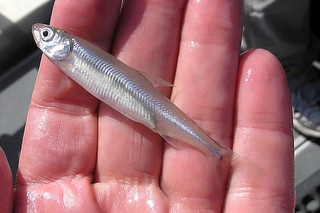
Water battles in the Sacramento-San Joaquin Delta have been fought over a basic question: as the state’s thirsty cities and farms demand more Delta water, is there enough left for endangered fish like the Delta smelt and chinook salmon?
In a report released today from the Bay Institute, environmentalists argue that the damage being done to the Delta ecosystem from removing water isn't fully being measured.
Two-thirds of Californians get their water from the Delta, the inland complex of islands and channels where the Sacramento and San Joaquin rivers come together, carrying runoff from tributaries and the Sierra Nevada snowpack. Two huge plants in the southern Delta can pump out tens of thousand of gallons of water per second, sending most of it to San Joaquin Valley farms and Southern California cities.
The water heading to the pumps contains fish. To prevent the fish from being ground up by the pumps, the water flows through special screening facilities, the Skinner Fish Facility and the Tracy Fish Facility. As many as 15 million fish per year are “salvaged” or captured at these screens. The fish are then loaded into trucks and released elsewhere in the Delta.
The problem, says Jon Rosenfield, a biologist with the Bay Institute, is that freshwater also contains smaller organisms. “The salvage facilities don’t count fish eggs or really small larval fish,” he says. “You can’t remove between 50 and 70 percent of the water in a system and not take out a very large fraction of the food that’s in that water.”